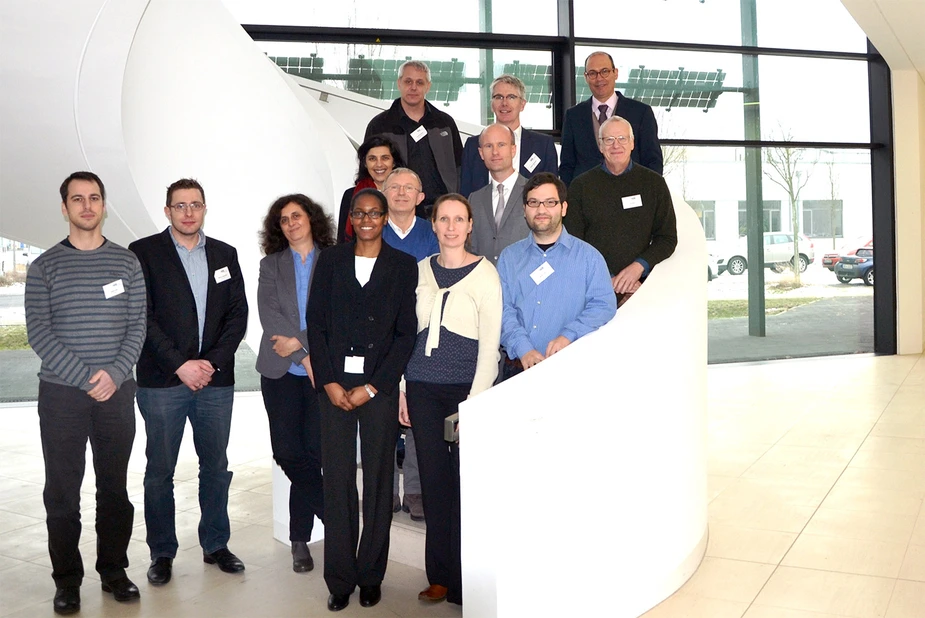Solar based hydrogen generation: EU-project PECSYS aiming for technological breakthrough
Development of demonstrators measuring up to ten square meters in area planned
The HZB is coordinating a Horizon 2020 EU project that is expected to develop an economically feasible technology for solar based hydrogen generation. Solar energy shall thereby be converted into chemical energy that can be stored as fuel by hydrogen. The project’s approach shall ensure that the levelised cost of hydrogen production remains below five Euros per kilogramme. The partners hailing from Germany, Sweden and Italy plan to ultimately build an array of modules covering ten square meters to demonstrate stable device performance on a large area. The project runs for four years and is funded with 2.5 million euros.
Currently, photovoltaics (PV) covers about 7.4 percent of the net electricity demand in Germany and on sunny weekends, this even rises to 50 percent. However, PV cannot generate electricity at night and in conditions with high cloud cover. Nevertheless, PV cells can be combined with electro-catalysts in order to split water into its constituent elements, hydrogen and water. This solar generated hydrogen thus stores solar energy in a chemical form and releases it, as required for example at night, via a fuel cell. Although in recent years research in this area has made much progress, up till now, unlike PV, no technological scale up to large areas has been accomplished. In other words: the race is currently wide open.
Partners in Germany, Italy, Sweden
This challenge will now be addressed by the PECSYS project: the project is coordinated by the Competence Centre Thin Film and Nanotechnology for Photovoltaics Berlin (PVcomB) at the HZB and brings together expertise from the Forschungszentrum Juelich, Germany; Uppsala University, Sweden; the National Research Council of Italy and from two corporations namely, Solibro Research AB, Sweden and 3SUN, Italy.
6 percent efficiency for 6 months
Dr Sonya Calnan, the spokesperson of the project and a researcher at HZB acknowledges, “The aims of the project are ambitious and very definite”: The demonstrator system to be developed is expected to be realised on an area of at least ten square meters, to convert more than six percent of the incident solar energy into hydrogen and to maintain stable operation for at least six months. Also, the cost of the so-generated hydrogen should be less than five euro per kilogramme. For comparison: the actual market price for hydrogen is about eight euro per kilogramme.
Integrated device
At PVcomB, photovoltaic cells based on different materials such as silicon and chalcogenides, as well as tandem cells based on metal halide perovskites, together with electro-catalysts and membranes shall be tested and protective layers developed. The goal is to ultimately develop an integrated device that can stably operate under extreme environmental conditions.
Appropriate for industrial production
The participating project teams thus aim to identify a system that is most appropriate for industrial production. The demonstrator systems with a total area of ten square metres shall then be installed at either Forschungzentrum Jülich and/or at 3SUN and produce at least ten kg of hydrogen in six months.
The project has received funding from the Fuel Cells and Hydrogen 2 Joint Undertaking under grant agreement No 735218. This Joint Undertaking receives support from the European Union’s Horizon 2020 Research and Innovation programme and Hydrogen Europe and N.ERGHY.
Spokesperson of PECSYS
Dr. Sonya Calnan
Institute Competence Centre Photovoltaics Berlin (PVcomB)
Tel.: (030) 8062-15675
Fax: (030) 8062-15677
Email: sonya.calnan(at)helmholtz-berlin.de
Press Officer:
Dr. Antonia Rötger
Tel.: (030) 8062-43733
Fax: (030) 8062-42998
Email antonia.roetger(at)helmholtz-berlin.de
